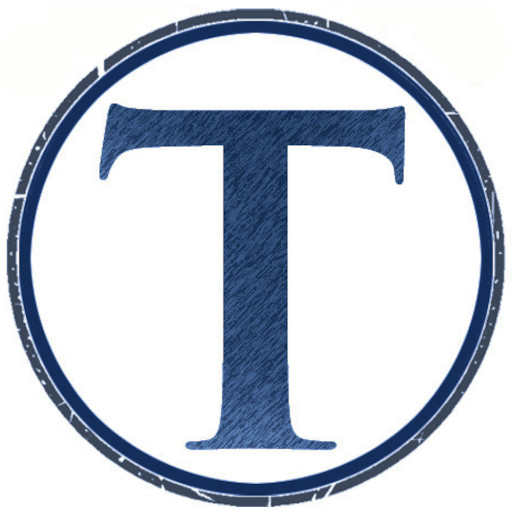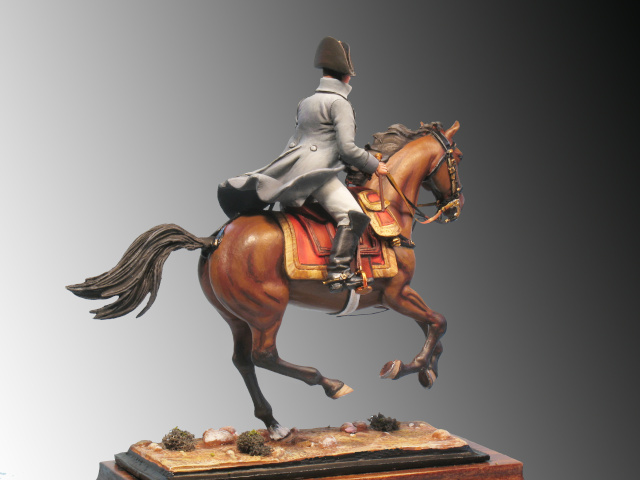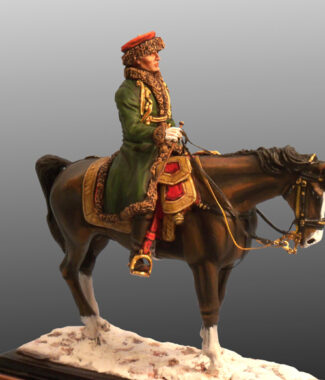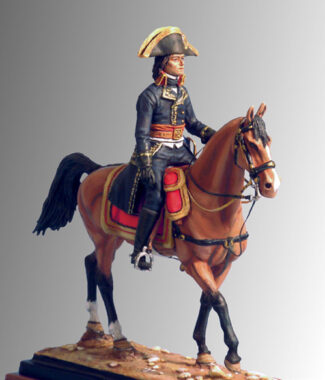You must be logged in to post a review.
Spain – 1809
€68.00
Figure to assemble and paint
Ref.: 10 – NAP
Weight: 70 grs.
Material: Resin horse and rider
Number of Pieces: 13
Historical Review:
On 27 September 1808, a great diplomatic summit took place in Erfurt in central Germany. It was convened by Napoleon and attended by all the allied monarchs and vassals of France, including the Tsar of Russia, as well as great artists and literati. Everything took place in a festive atmosphere. But the Emperor of France, behind his satisfied countenance, had a serious cause for concern. Two months earlier he had suffered an unexpected and humiliating defeat in Spain at the Battle of Bailen, when he thought he had the whole country in his hands. He had therefore begun preparations to reconquer the Peninsula, and he himself planned to take the lead in the campaign. But first he wanted to cover his own back. To this end he managed to persuade the Tsar to support him in the event that Austria launched a war against France.
The defeat and subsequent surrender of Dupont at Bailen in July, as well as the difficulties he encountered in Saragossa, Valencia and Catalonia, forced Napoleon to concern himself seriously with the affairs of the Peninsula. The emperor decided to take charge of operations himself, and concentrated some 300,000 troops in Spain, many of them veterans of the campaigns in Europe, and the best marshals of the Empire, Soult, Victor, Ney, Morder and Lefèbvre.
Bearing in mind that Napoleon arrived in Bayonne on 3 November 1808, crossed the border the next day and arrived in Toulouse on the 4th, until his march from Valladolid to Burgos on 18 January 1809, before crossing the Bidasoa River on the 20th and leaving Spain for good, Napoleon’s presence in Spain was short:
1808.
- Entry into Vtoria (6 November).
- Entry into Burgos, after the victory over the Spanish at Gamonal (11 November).
- After the Battle of Somosierra, enters Madrid and establishes his headquarters at Chamartín (14 November)
- After several weeks in Madrid, he leaves to meet General Moore (22 November).
1809.
- While encamped in Astorga, he receives a letter with bad news: Austria is preparing for war
- He withdraws to Valladolid (7th January) where he awaits news (7th -17th January). (2nd January).
- Begins his return. Leaves Valladolid (17 January) for Burgos. Arrives at the border (19 January).
- Crosses the border (20 January).
We are, therefore, far from the idealised image of the emperor on a fiery bull horse, as depicted in paintings. Napoleon, who never rode academically, compensated for his shortcomings as a horseman with an energy and stamina that made him an object of admiration even among his veteran hunters on horseback. As an example, the following event from his campaign in Spain: forced to break off the pursuit of Moore and head for France in the face of the growing Austrian threat, Napoleon embarked on an epic ride from Valladolid to Burgos – 120 kilometres of unbridled racing. Five horses were chosen for the relays, Montevideo was one of the chosen ones and would be used for the most difficult and arduous part of the journey, which was covered in barely three and a half hours, along guerrilla-infested roads. He arrived practically alone, without turning his head, leaving behind his escort of guard hunters, aides-de-camp, marshals and generals.
The Montevideo horse, one of the emperor’s favourites, according to the historian of the empire Frederic Masson, was a Criollo horse from the Plata region of South America, with a chestnut coat (other sources describe it as a brown chestnut coat and a third source cites him as bay in colour.), whole, docile, hardy and obedient.








Reviews
There are no reviews yet.